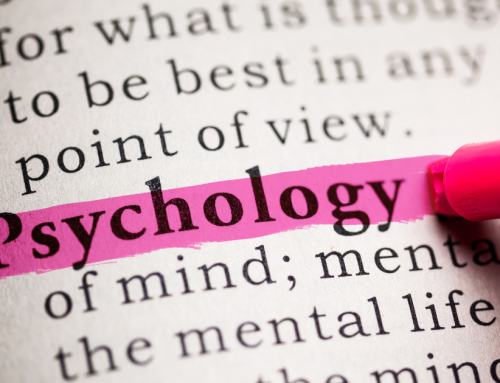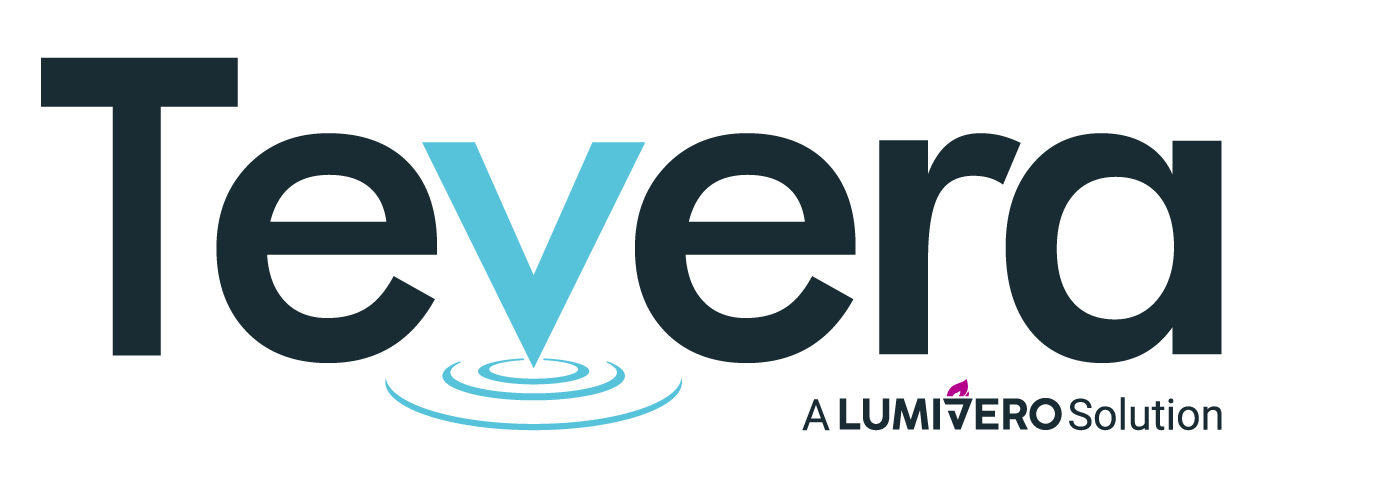Effective Feedback Loops in College Programs: Bridging the Gaps
What are Feedback Loops?
Feedback loops are vital in ensuring the continuous improvement and relevance of university programs, especially those with field experience components. They help in bridging the gap between academic learning and real-world application. In this article, we’ll look at establishing and maintaining feedback loops involving various personas, including program leaders, faculty, students, field educators, and program administrators.
Feedback Loop Stakeholders
Feedback loops create communication bridges between all of your program’s key stakeholders. To be effective, everyone must participate. Here’s a look at the roles each stakeholder plays along with their feedback mechanisms and tasks.
Program Leaders (Deans and Program Chairs)
-
- Role: Program leaders set the vision, goals, and standards for the program.
- Feedback Mechanism: Feedback mechanisms include regular meetings with faculty, field supervisors, and program administrators to gather insights on program performance, challenges in fieldwork, and potential areas of improvement.
- Tasks: Program leaders regularly adjust program content, liaise with accrediting bodies, and mobilize resources based on feedback.
Faculty
-
- Role: Faculty are the builders and project managers of feedback loops as they design and deliver the curriculum and guide students before, during, and after their field experience.
- Feedback Mechanism: Feedback mechanisms include surveys and direct interactions with students pre and post fieldwork. Collaborative meetings with field educators to understand practical challenges and curriculum alignment.
- Tasks: Faculty codify curriculum based on fieldwork insights, integrate real-world examples in lectures, and address students’ concerns regarding fieldwork.
Students
-
- Role: Students are the main beneficiaries of the program and the bridge between theoretical knowledge and its practical application.
- Feedback Mechanism: Feedback mechanisms include reflection journals, surveys, and debrief sessions post fieldwork to share their experiences, learnings, and challenges with faculty and external site supervisors.
- Tasks: Students incorporate feedback from university supervisors and external site supervisors to improve their practice while also sharing their experiences with the programs to elevate the field and curricular experiences for future students.
Field Educators, Supervisors, Cooperating Teachers
-
- Role: Field educators, supervisors, and cooperating teachers oversee students during fieldwork, ensuring the application of academic knowledge and skill development.
- Feedback Mechanism: Feedback mechanisms include periodic reports on student performance, challenges faced, and curriculum alignment with real-world needs.
- Tasks: Field educators, supervisors, and cooperating teachers mentor students on site, liaise with faculty for curriculum adjustments, and provide resources for students to overcome challenges while growing their professional skillset.
Program Administrators
-
- Role: Program administrators bring everything together including the compilation and analysis of data pertinent to student and program performance and accreditation requirements.
- Feedback Mechanism: Feedback mechanisms include analyzing feedback from all stakeholders, compiling data on program outcomes and standards adherence, and preparing reports for program leaders and accrediting bodies.
- Tasks: Program administrators highlight areas of improvement, ensuring compliance with accreditation standards, and providing data-driven insights to influence program development.
Incorporating feedback loops in college programs with field experience components ensures holistic development, aligning academic teachings with real-world application, and meeting accreditation standards.
The Key to Effective Feedback Loops: Rubrics
Rubrics play an integral role in feedback loops, primarily because they provide a clear and structured method for evaluating performance, be it in assignments, fieldwork, or other assessments. Here’s a breakdown of their importance in feedback loops:
Clarifying Expectations and Standards
Rubrics clearly outline what is expected from students or participants, ensuring that they understand the criteria against which they will be assessed. This transparency promotes a shared understanding between the evaluator and the evaluated.
Promoting Consistency and Fairness in Evaluation
By providing specific criteria and descriptors for each performance level, rubrics ensure that evaluations are consistent across different evaluators or over time. This consistency helps in mitigating biases and ensuring fairness.
Enhancing the Quality of Feedback
Rubrics offer detailed feedback, highlighting areas of strength and areas needing improvement. This detailed breakdown allows students or participants to understand where they excelled and where they fell short, promoting targeted improvement.
Improving Course Design and Teaching Strategies
Based on the collective feedback derived from rubrics, educators can identify areas where many students are facing challenges. This insight can then be used to modify teaching strategies or curriculum components.
Facilitating Self Assessments
Rubrics can also be used by students themselves for self-assessment. This promotes critical self-reflection which helps students internalize their learning and better-collaborate with their external supervisors and university faculty.
Saving Time while Maintaining Quality
The initial creation of a rubric might be time-consuming, but once developed it streamlines the feedback process. Educators can provide comprehensive feedback in a shorter time frame without compromising on its quality.
Aligning with Learning Goals
Rubrics, by their very design, align with specific learning goals or outcomes. This alignment ensures that the feedback provided is directly related to the objectives of the course or program.
In the context of the feedback loops described earlier, rubrics offer a structured and consistent mechanism for gathering feedback from various stakeholders, be it students, field educators, or faculty. The insights derived from these rubrics can then be used to modify and enhance the program, creating a continuous loop of improvement.
Obstacles to Effective Feedback Loops
Developing effective feedback loops, as previously described, is fundamental for the continual improvement of any program. However, there are several obstacles that can hinder the successful establishment and operation of these feedback loops. Here are the key challenges:
Time Constraints
Collecting, analyzing, and acting upon feedback is a time-intensive process. When stakeholders feel pressed for time, they might not be able to provide detailed feedback or might skip the feedback process altogether.
Incomplete or Inadequate Feedback
Sometimes, feedback can be vague, lacking specifics, or might not cover all aspects of the assessment. Incomplete feedback can lead to misguided interpretations and actions.
Defensive Attitudes
Accepting feedback, especially if it’s critical, requires openness and humility. Stakeholders, especially educators or program leaders, might become defensive, dismissing the feedback rather than taking it constructively.
Lack of Clear Objectives
If the goals and objectives of the feedback loop aren’t well-defined from the outset, it can lead to confusion and misdirection.
Inconsistent Feedback Standards
Without a clear and consistent set of criteria, like what rubrics provide, feedback might vary widely based on individual perceptions and biases.
Over-reliance on Quantitative Data
While quantitative data is important, relying solely on it can overlook qualitative insights that provide depth and context to the feedback.
Feedback Loop Fatigue
Continually asking stakeholders for feedback can lead to fatigue, with them either providing perfunctory responses or avoiding the feedback process.
Inadequate Systems and Infrastructure
The lack of a systematic approach or technological tools can hinder the smooth operation of feedback loops, from collecting to analyzing and acting on feedback.
Not Acting on Feedback
If stakeholders perceive that their feedback isn’t leading to any tangible changes, they might become disillusioned and less likely to participate in future feedback cycles.
Communication Barriers
Effective feedback requires clear communication. Language barriers, unclear instructions, or the lack of a safe environment to provide feedback can all hinder the feedback process.
For feedback loops to be effective, it’s essential to recognize these obstacles and develop strategies to overcome them. This ensures that the feedback collected is not only comprehensive and relevant but also leads to meaningful changes.
Learn How Tevera Supports Building Effective Feedback Loops
Feedback loops are essential in bridging the gap between academic learnings and real-world application. Establishing and maintaining feedback loops involving various personas, including program leaders, faculty, students, field educators, and program administrators may not be easy but overcoming obstacles to develop them will help elevate your program. Software solutions like Tevera can make this process much simpler by allowing students, faculty, external supervisors, program administrators, and program leaders to collaborate with shared access to insights.
Learn how Tevera supports feedback loops by scheduling a product overview today!
LEARN MORE
“How to Provide Better Feedback Through Rubrics”
by Jay McTighe & Tony Frontier
This article provides a good overview of rubrics and emphasizes that well-crafted rubrics serve as shared road maps for teaching and learning, marking critical routes for both teachers and students. While written for K-12, anyone interested in rubrics can benefit.
SOLUTIONS
RELATED POSTS
PRODUCT OVERVIEW
See how Tevera can elevate your program.
Effective Feedback Loops in College Programs: Bridging the Gaps
What are Feedback Loops?
Feedback loops are vital in ensuring the continuous improvement and relevance of university programs, especially those with field experience components. They help in bridging the gap between academic learning and real-world application. In this article, we’ll look at establishing and maintaining feedback loops involving various personas, including program leaders, faculty, students, field educators, and program administrators.
Feedback Loop Stakeholders
Feedback loops create communication bridges between all of your program’s key stakeholders. To be effective, everyone must participate. Here’s a look at the roles each stakeholder plays along with their feedback mechanisms and tasks.
Program Leaders (Deans and Program Chairs)
-
- Role: Program leaders set the vision, goals, and standards for the program.
- Feedback Mechanism: Feedback mechanisms include regular meetings with faculty, field supervisors, and program administrators to gather insights on program performance, challenges in fieldwork, and potential areas of improvement.
- Tasks: Program leaders regularly adjust program content, liaise with accrediting bodies, and mobilize resources based on feedback.
Faculty
-
- Role: Faculty are the builders and project managers of feedback loops as they design and deliver the curriculum and guide students before, during, and after their field experience.
- Feedback Mechanism: Feedback mechanisms include surveys and direct interactions with students pre and post fieldwork. Collaborative meetings with field educators to understand practical challenges and curriculum alignment.
- Tasks: Faculty codify curriculum based on fieldwork insights, integrate real-world examples in lectures, and address students’ concerns regarding fieldwork.
Students
-
- Role: Students are the main beneficiaries of the program and the bridge between theoretical knowledge and its practical application.
- Feedback Mechanism: Feedback mechanisms include reflection journals, surveys, and debrief sessions post fieldwork to share their experiences, learnings, and challenges with faculty and external site supervisors.
- Tasks: Students incorporate feedback from university supervisors and external site supervisors to improve their practice while also sharing their experiences with the programs to elevate the field and curricular experiences for future students.
Field Educators, Supervisors, Cooperating Teachers
-
- Role: Field educators, supervisors, and cooperating teachers oversee students during fieldwork, ensuring the application of academic knowledge and skill development.
- Feedback Mechanism: Feedback mechanisms include periodic reports on student performance, challenges faced, and curriculum alignment with real-world needs.
- Tasks: Field educators, supervisors, and cooperating teachers mentor students on site, liaise with faculty for curriculum adjustments, and provide resources for students to overcome challenges while growing their professional skillset.
Program Administrators
-
- Role: Program administrators bring everything together including the compilation and analysis of data pertinent to student and program performance and accreditation requirements.
- Feedback Mechanism: Feedback mechanisms include analyzing feedback from all stakeholders, compiling data on program outcomes and standards adherence, and preparing reports for program leaders and accrediting bodies.
- Tasks: Program administrators highlight areas of improvement, ensuring compliance with accreditation standards, and providing data-driven insights to influence program development.
Incorporating feedback loops in college programs with field experience components ensures holistic development, aligning academic teachings with real-world application, and meeting accreditation standards.
The Key to Effective Feedback Loops: Rubrics
Rubrics play an integral role in feedback loops, primarily because they provide a clear and structured method for evaluating performance, be it in assignments, fieldwork, or other assessments. Here’s a breakdown of their importance in feedback loops:
Clarifying Expectations and Standards
Rubrics clearly outline what is expected from students or participants, ensuring that they understand the criteria against which they will be assessed. This transparency promotes a shared understanding between the evaluator and the evaluated.
Promoting Consistency and Fairness in Evaluation
By providing specific criteria and descriptors for each performance level, rubrics ensure that evaluations are consistent across different evaluators or over time. This consistency helps in mitigating biases and ensuring fairness.
Enhancing the Quality of Feedback
Rubrics offer detailed feedback, highlighting areas of strength and areas needing improvement. This detailed breakdown allows students or participants to understand where they excelled and where they fell short, promoting targeted improvement.
Improving Course Design and Teaching Strategies
Based on the collective feedback derived from rubrics, educators can identify areas where many students are facing challenges. This insight can then be used to modify teaching strategies or curriculum components.
Facilitating Self Assessments
Rubrics can also be used by students themselves for self-assessment. This promotes critical self-reflection which helps students internalize their learning and better-collaborate with their external supervisors and university faculty.
Saving Time while Maintaining Quality
The initial creation of a rubric might be time-consuming, but once developed it streamlines the feedback process. Educators can provide comprehensive feedback in a shorter time frame without compromising on its quality.
Aligning with Learning Goals
Rubrics, by their very design, align with specific learning goals or outcomes. This alignment ensures that the feedback provided is directly related to the objectives of the course or program.
In the context of the feedback loops described earlier, rubrics offer a structured and consistent mechanism for gathering feedback from various stakeholders, be it students, field educators, or faculty. The insights derived from these rubrics can then be used to modify and enhance the program, creating a continuous loop of improvement.
Obstacles to Effective Feedback Loops
Developing effective feedback loops, as previously described, is fundamental for the continual improvement of any program. However, there are several obstacles that can hinder the successful establishment and operation of these feedback loops. Here are the key challenges:
Time Constraints
Collecting, analyzing, and acting upon feedback is a time-intensive process. When stakeholders feel pressed for time, they might not be able to provide detailed feedback or might skip the feedback process altogether.
Incomplete or Inadequate Feedback
Sometimes, feedback can be vague, lacking specifics, or might not cover all aspects of the assessment. Incomplete feedback can lead to misguided interpretations and actions.
Defensive Attitudes
Accepting feedback, especially if it’s critical, requires openness and humility. Stakeholders, especially educators or program leaders, might become defensive, dismissing the feedback rather than taking it constructively.
Lack of Clear Objectives
If the goals and objectives of the feedback loop aren’t well-defined from the outset, it can lead to confusion and misdirection.
Inconsistent Feedback Standards
Without a clear and consistent set of criteria, like what rubrics provide, feedback might vary widely based on individual perceptions and biases.
Over-reliance on Quantitative Data
While quantitative data is important, relying solely on it can overlook qualitative insights that provide depth and context to the feedback.
Feedback Loop Fatigue
Continually asking stakeholders for feedback can lead to fatigue, with them either providing perfunctory responses or avoiding the feedback process.
Inadequate Systems and Infrastructure
The lack of a systematic approach or technological tools can hinder the smooth operation of feedback loops, from collecting to analyzing and acting on feedback.
Not Acting on Feedback
If stakeholders perceive that their feedback isn’t leading to any tangible changes, they might become disillusioned and less likely to participate in future feedback cycles.
Communication Barriers
Effective feedback requires clear communication. Language barriers, unclear instructions, or the lack of a safe environment to provide feedback can all hinder the feedback process.
For feedback loops to be effective, it’s essential to recognize these obstacles and develop strategies to overcome them. This ensures that the feedback collected is not only comprehensive and relevant but also leads to meaningful changes.
Learn How Tevera Supports Building Effective Feedback Loops
Feedback loops are essential in bridging the gap between academic learnings and real-world application. Establishing and maintaining feedback loops involving various personas, including program leaders, faculty, students, field educators, and program administrators may not be easy but overcoming obstacles to develop them will help elevate your program. Software solutions like Tevera can make this process much simpler by allowing students, faculty, external supervisors, program administrators, and program leaders to collaborate with shared access to insights.
Learn how Tevera supports feedback loops by scheduling a product overview today!
LEARN MORE
“How to Provide Better Feedback Through Rubrics”
by Jay McTighe & Tony Frontier
This article provides a good overview of rubrics and emphasizes that well-crafted rubrics serve as shared road maps for teaching and learning, marking critical routes for both teachers and students. While written for K-12, anyone interested in rubrics can benefit.
Effective Feedback Loops in College Programs: Bridging the Gaps
What are Feedback Loops?
Feedback loops are vital in ensuring the continuous improvement and relevance of university programs, especially those with field experience components. They help in bridging the gap between academic learning and real-world application. In this article, we’ll look at establishing and maintaining feedback loops involving various personas, including program leaders, faculty, students, field educators, and program administrators.
Feedback Loop Stakeholders
Feedback loops create communication bridges between all of your program’s key stakeholders. To be effective, everyone must participate. Here’s a look at the roles each stakeholder plays along with their feedback mechanisms and tasks.
Program Leaders (Deans and Program Chairs)
-
- Role: Program leaders set the vision, goals, and standards for the program.
- Feedback Mechanism: Feedback mechanisms include regular meetings with faculty, field supervisors, and program administrators to gather insights on program performance, challenges in fieldwork, and potential areas of improvement.
- Tasks: Program leaders regularly adjust program content, liaise with accrediting bodies, and mobilize resources based on feedback.
Faculty
-
- Role: Faculty are the builders and project managers of feedback loops as they design and deliver the curriculum and guide students before, during, and after their field experience.
- Feedback Mechanism: Feedback mechanisms include surveys and direct interactions with students pre and post fieldwork. Collaborative meetings with field educators to understand practical challenges and curriculum alignment.
- Tasks: Faculty codify curriculum based on fieldwork insights, integrate real-world examples in lectures, and address students’ concerns regarding fieldwork.
Students
-
- Role: Students are the main beneficiaries of the program and the bridge between theoretical knowledge and its practical application.
- Feedback Mechanism: Feedback mechanisms include reflection journals, surveys, and debrief sessions post fieldwork to share their experiences, learnings, and challenges with faculty and external site supervisors.
- Tasks: Students incorporate feedback from university supervisors and external site supervisors to improve their practice while also sharing their experiences with the programs to elevate the field and curricular experiences for future students.
Field Educators, Supervisors, Cooperating Teachers
-
- Role: Field educators, supervisors, and cooperating teachers oversee students during fieldwork, ensuring the application of academic knowledge and skill development.
- Feedback Mechanism: Feedback mechanisms include periodic reports on student performance, challenges faced, and curriculum alignment with real-world needs.
- Tasks: Field educators, supervisors, and cooperating teachers mentor students on site, liaise with faculty for curriculum adjustments, and provide resources for students to overcome challenges while growing their professional skillset.
Program Administrators
-
- Role: Program administrators bring everything together including the compilation and analysis of data pertinent to student and program performance and accreditation requirements.
- Feedback Mechanism: Feedback mechanisms include analyzing feedback from all stakeholders, compiling data on program outcomes and standards adherence, and preparing reports for program leaders and accrediting bodies.
- Tasks: Program administrators highlight areas of improvement, ensuring compliance with accreditation standards, and providing data-driven insights to influence program development.
Incorporating feedback loops in college programs with field experience components ensures holistic development, aligning academic teachings with real-world application, and meeting accreditation standards.
The Key to Effective Feedback Loops: Rubrics
Rubrics play an integral role in feedback loops, primarily because they provide a clear and structured method for evaluating performance, be it in assignments, fieldwork, or other assessments. Here’s a breakdown of their importance in feedback loops:
Clarifying Expectations and Standards
Rubrics clearly outline what is expected from students or participants, ensuring that they understand the criteria against which they will be assessed. This transparency promotes a shared understanding between the evaluator and the evaluated.
Promoting Consistency and Fairness in Evaluation
By providing specific criteria and descriptors for each performance level, rubrics ensure that evaluations are consistent across different evaluators or over time. This consistency helps in mitigating biases and ensuring fairness.
Enhancing the Quality of Feedback
Rubrics offer detailed feedback, highlighting areas of strength and areas needing improvement. This detailed breakdown allows students or participants to understand where they excelled and where they fell short, promoting targeted improvement.
Improving Course Design and Teaching Strategies
Based on the collective feedback derived from rubrics, educators can identify areas where many students are facing challenges. This insight can then be used to modify teaching strategies or curriculum components.
Facilitating Self Assessments
Rubrics can also be used by students themselves for self-assessment. This promotes critical self-reflection which helps students internalize their learning and better-collaborate with their external supervisors and university faculty.
Saving Time while Maintaining Quality
The initial creation of a rubric might be time-consuming, but once developed it streamlines the feedback process. Educators can provide comprehensive feedback in a shorter time frame without compromising on its quality.
Aligning with Learning Goals
Rubrics, by their very design, align with specific learning goals or outcomes. This alignment ensures that the feedback provided is directly related to the objectives of the course or program.
In the context of the feedback loops described earlier, rubrics offer a structured and consistent mechanism for gathering feedback from various stakeholders, be it students, field educators, or faculty. The insights derived from these rubrics can then be used to modify and enhance the program, creating a continuous loop of improvement.
Obstacles to Effective Feedback Loops
Developing effective feedback loops, as previously described, is fundamental for the continual improvement of any program. However, there are several obstacles that can hinder the successful establishment and operation of these feedback loops. Here are the key challenges:
Time Constraints
Collecting, analyzing, and acting upon feedback is a time-intensive process. When stakeholders feel pressed for time, they might not be able to provide detailed feedback or might skip the feedback process altogether.
Incomplete or Inadequate Feedback
Sometimes, feedback can be vague, lacking specifics, or might not cover all aspects of the assessment. Incomplete feedback can lead to misguided interpretations and actions.
Defensive Attitudes
Accepting feedback, especially if it’s critical, requires openness and humility. Stakeholders, especially educators or program leaders, might become defensive, dismissing the feedback rather than taking it constructively.
Lack of Clear Objectives
If the goals and objectives of the feedback loop aren’t well-defined from the outset, it can lead to confusion and misdirection.
Inconsistent Feedback Standards
Without a clear and consistent set of criteria, like what rubrics provide, feedback might vary widely based on individual perceptions and biases.
Over-reliance on Quantitative Data
While quantitative data is important, relying solely on it can overlook qualitative insights that provide depth and context to the feedback.
Feedback Loop Fatigue
Continually asking stakeholders for feedback can lead to fatigue, with them either providing perfunctory responses or avoiding the feedback process.
Inadequate Systems and Infrastructure
The lack of a systematic approach or technological tools can hinder the smooth operation of feedback loops, from collecting to analyzing and acting on feedback.
Not Acting on Feedback
If stakeholders perceive that their feedback isn’t leading to any tangible changes, they might become disillusioned and less likely to participate in future feedback cycles.
Communication Barriers
Effective feedback requires clear communication. Language barriers, unclear instructions, or the lack of a safe environment to provide feedback can all hinder the feedback process.
For feedback loops to be effective, it’s essential to recognize these obstacles and develop strategies to overcome them. This ensures that the feedback collected is not only comprehensive and relevant but also leads to meaningful changes.
Learn How Tevera Supports Building Effective Feedback Loops
Feedback loops are essential in bridging the gap between academic learnings and real-world application. Establishing and maintaining feedback loops involving various personas, including program leaders, faculty, students, field educators, and program administrators may not be easy but overcoming obstacles to develop them will help elevate your program. Software solutions like Tevera can make this process much simpler by allowing students, faculty, external supervisors, program administrators, and program leaders to collaborate with shared access to insights.
Learn how Tevera supports feedback loops by scheduling a product overview today!
LEARN MORE
“How to Provide Better Feedback Through Rubrics”
by Jay McTighe & Tony Frontier
This article provides a good overview of rubrics and emphasizes that well-crafted rubrics serve as shared road maps for teaching and learning, marking critical routes for both teachers and students. While written for K-12, anyone interested in rubrics can benefit.

















